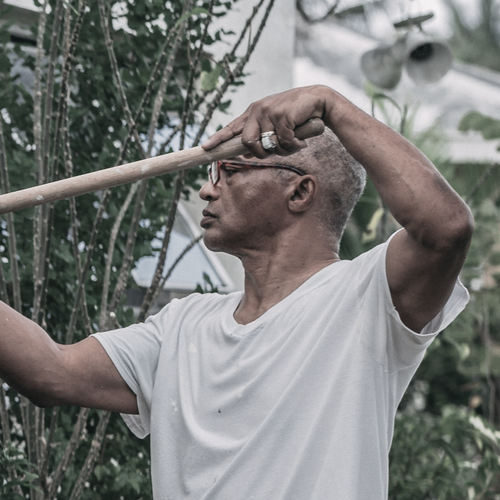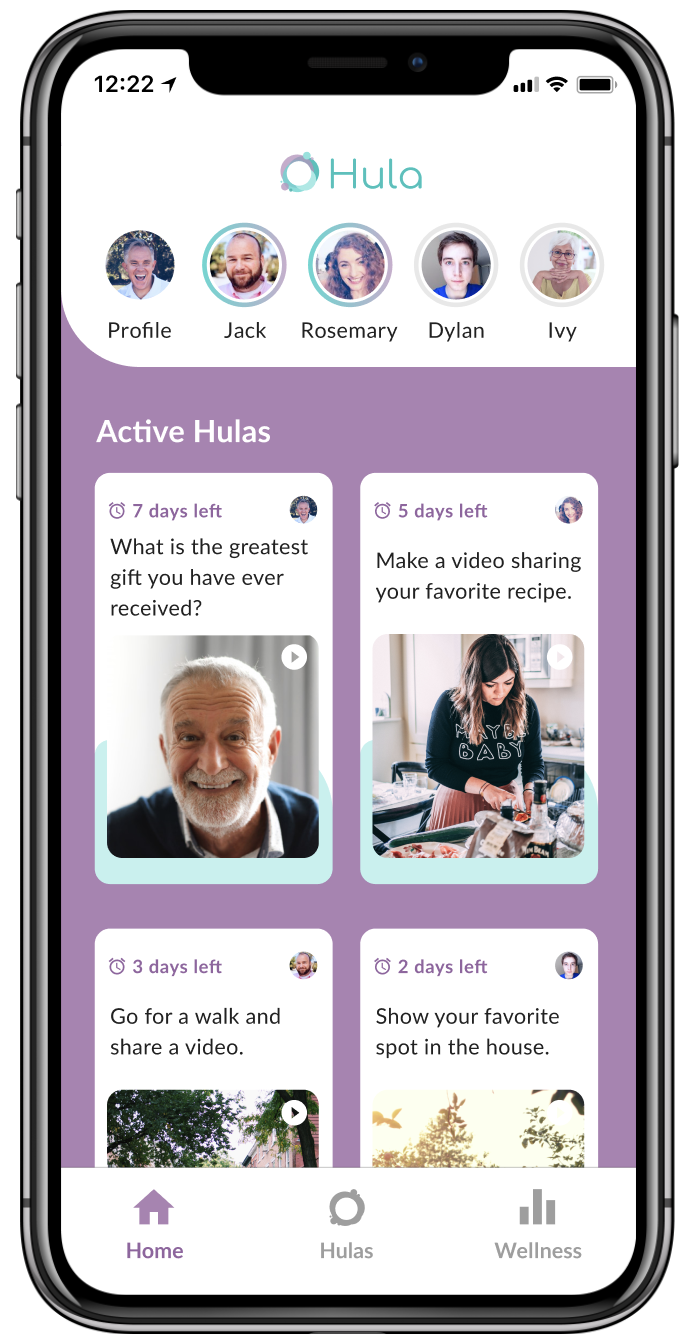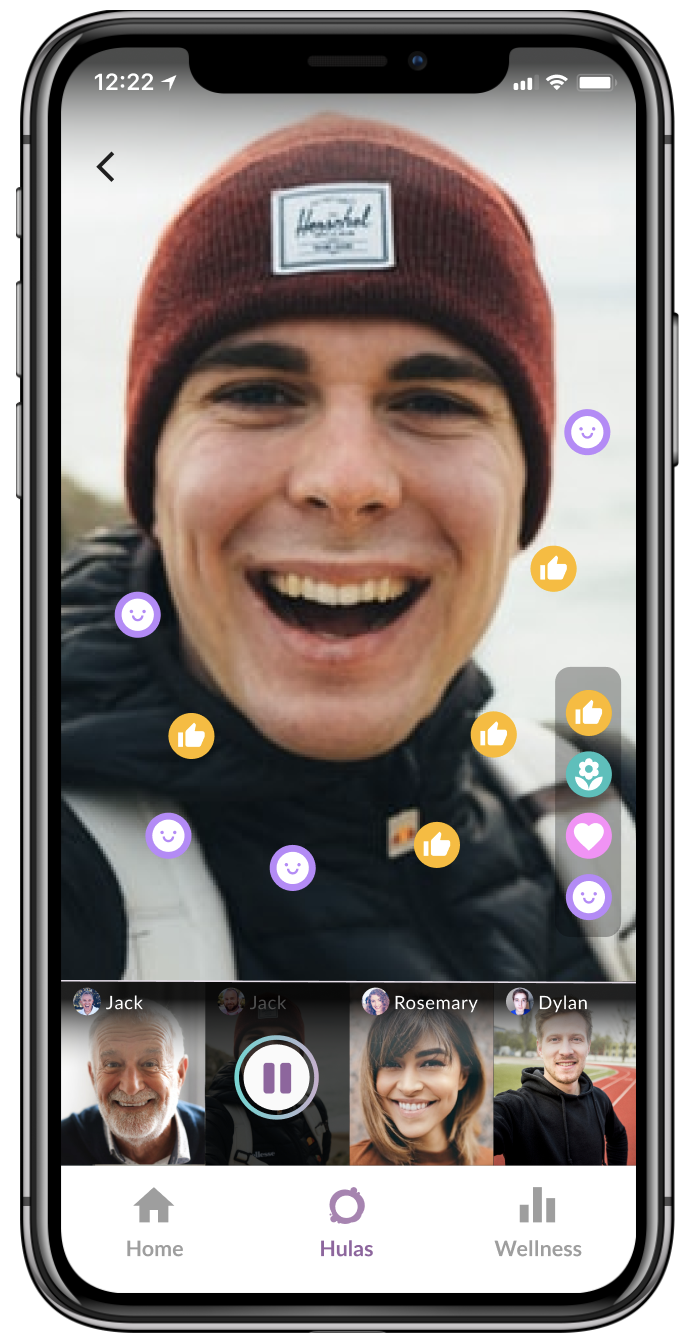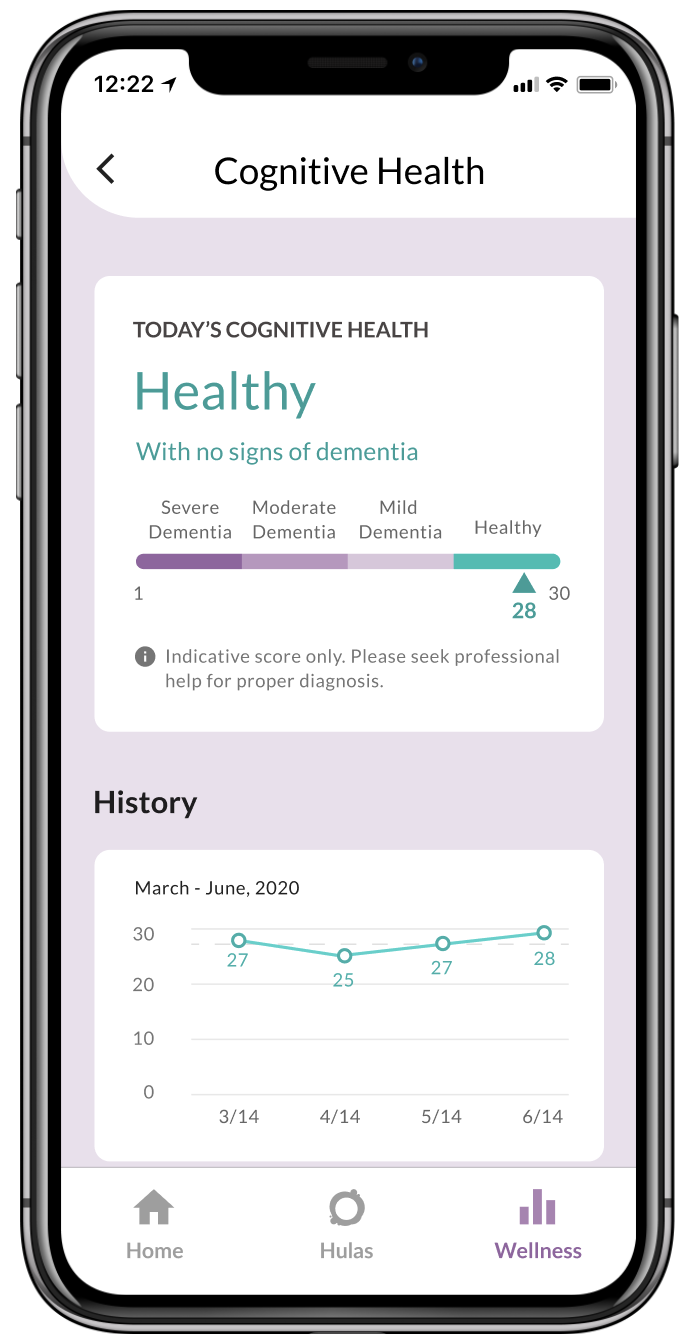
Nationwide
The golden opportunity in the Silver Economy.
The golden years of retirement are envisioned by aging adults as an opportunity to make new memories in the place they love most — their homes. An AARP study found that 85% of consumers 65+ want to stay in their homes as they age, i.e. age in place, but this pursuit does not come without challenges. Through our research, we found that aging adults and their adult children experience difficulties around expectations that come with aging in place, resulting in tensions that obstruct a safe and happy outcome.
Together with Nationwide, we’ve identified the need to tackle current barriers to empower families to improve their experiences of aging.
Client: Nationwide
Team Neverland: Katie Johnstone, Marc Dubin, Amrita Sakhrani, Missy Chen
Role: Product Designer & Project Manager
Year: 2020
Problem Space.
Some people call it “The Silver Economy” — the forecast that the number of older adults will increase in the future, resulting in a market filled with potential opportunities. We sought to find worth-solving pain points in this space and are focused on the plight of adult children who manage their parents' wellbeing from afar. Particularly, we set out to understand why monitoring solutions, despite a plethora of options, are not highly adopted.
The number of older adults will more than double by 2050, representing over 20% of the population.
Source: AARP Aging Readiness Report
There are at least 17.7 million non-professional individuals caring for someone aged 65 and older.
With an aging population, this is slated to grow.
The Challenge.
Our objective was to design a solution that addresses the true nature of aging — one that affects and involves both aging adults and their adult children. Additionally, we knew that we were tackling an emotionally charged topic, filled with fear and unknowns from the realization that death is imminent. Therefore, we aspired to tackle the challenge with compassion and empathy. We asked ourselves:
— How might we transform the aging in place care experience between two people who love each other, aging adults and their adult children?
My Role.
With my dual role of a Product Designer & Project Manager I led the planning of research and design initiatives, while also actively participating in all methodologies and activities.
Additionally, I am the point of contact for our client and external stakeholders. I created a collaborative relationship by facilitating communication with the Nationwide team and addressing constraints brought forth.
The Process.
01. Discover
Semi-Structured Interviews
Directed Storytelling
Collage
Storyboards & Speed-Dating
Survey
02. Define
People We Design For
Affinity Diagramming
Journey Map
Empathy Map
Modeling
03. Design
Sitemap
Accessibility Guidelines
Prototype
01. Discover
We conducted research in three phases as we transitioned between different aspects of this vast domain. Alongside our partners at Nationwide, we reframed and pivoted, gaining a holistic view of the challenges faced by aging adults and their adult children.
Phase 01
Silence is deafening
We began by investigating the current state of planning conversations about retirement.
Goal: Understand the process, context, and outcomes around conversations with loved ones about retirement .
Phase 02
Purpose & Identity
We discovered that planning for retirement is a challenging solo journey for aging adults — where they build a new sense of identity and rediscover their purpose.
Goal: Learn what provides purpose to aging adults as they advance in retirement and redefine their identity.
Phase 03
Managing from afar
Soon after the global COVID-19 pandemic gained full force, we saw opportunity to study the abilities and limitations of an adult child taking care of a parent remotely, with and without the use of monitoring products.
Goal: Understand why monitoring solutions are under-adopted, and what broader needs might be addressed.
User Research.
Marrying quantitative and qualitative
We employed an array of generative research methods to gather data from both aging adults and their adult children. After doing a preliminary round of synthesis, we applied an evaluative method to validate some of the derived insights. With this approach, we were able to consolidate well-rounded findings.
Over the span of 8 months, we spoke to 140+ participants, using the following methodologies:
Semi-Structured Interviews
As our starting point, we constructed a set of questions and spoke to participants to learn more about the problem space.
“Tell me about…”
Team Neverland preparing for interviews at an aging adult center.
Directed Storytelling
To understand functional gaps, we asked participants to share concrete examples of scenarios when they had specific issues connecting with loved ones from afar.
“Tell me about a time when…”
Marc preparing for an interview with an aging adult.
Collage
To understand underlying emotions, we asked participants to select images that represented how they felt about monitoring solutions. Traditionally done in-person, but due to the COVID-19 pandemic, we adapted these activities to be conducted virtually using the Mural platform.
“Select from the following images…”
Sample collage made by an adult child we spoke to.
Storyboards & Speed-Dating
To validate user needs, we presented participants with a variety of scenarios focused on aging and retirement to assess if any resonated with them.
“Do you identify with this?”
Sample storyboard we created to gather feedback from aging adults.
Survey
To validate hypotheses and insights from our qualitative research, we gathered quantifiable data around attitudes and desires surrounding monitoring.
“Please rate the following options”
Partial preview of survey responses on attitudes about the aging experience.
02. Define
People We Design For.
Based on our research, we identified our target users — we chose to focus on both aging adults and their adult children because we discovered that the aging in place experience is not singular. Monitoring, particularly, is a two-sided experience.
Aging Adults
“I”m not ready for the rocking chair”
We designed for retired or semi-retired aging adults. They live independently, alone or with a partner, and are cognitively capable. Their health status ranges from a clean slate to chronic managed issues.
Adult Children
“I care, but I don’t provide care”
Our primary design audience is aging adults' children. Many of them live out-of-state from their parents. While their parents may not yet meet the threshold for assisted living, they are concerned about their day to day wellbeing.
Affinity Diagramming.
Synthesizing hundreds of data points
After conducting our semistructured interviews we ran several interpretation sessions to codify and extract specific observations from our raw notes. The results from the interpretation sessions generated the foundation for creating an affinity diagram.
We followed the Holtzblatt method to synthesize and identify insights from our interviews. We began by clustering findings from our interviews (here, orange and green notes) and abstracted upwards into blue notes. We made commentary and hypothesis with the pink notes, shown here.
Partial image of our affinity diagram.
Journey Map.
The retirement experience from start to finish
We also mapped out the aging adult’s journey through retirement into 3 segments: Pre-Retirement, Autonomous Retirement, and Decline and Dependency. We focused on organizing our findings into aging adults’ Actions, Jobs to be Done, what they are Thinking, their Feelings and Pain Points, and Opportunities. This helped us gain a holistic understanding of the aging experience.
Team Neverland drafting the journey map on a whiteboard.
Finalized journey map of the retirement experience.
Empathy Map.
Putting ourselves into Adult Children’s shoes
After working through the findings from our affinity diagram, we still felt the need to dive deeper into the temperament of an adult child when supporting and caring for their loved one. We created an empathy map based on the findings we had in our affinity diagram but from the perspective of adult children. This helped us immerse ourselves into their point of view and work through the different emotions.
Modeling.
Visualizing changing power dynamics
Based on our findings we uncovered that there’s a shift in power dynamics between aging adults and their children during retirement, which can be metaphorically represented as a tug of war . We used The Wheel of Change to identify our parties' mental models, behaviors and systemic forces at play. This framework allowed us to map out in more detail the internal and external factors that affect their relationship. This helped inform our solution to consider the best approach to balance power dynamics.
Mapping the problem space
To synthesize the journey map, empathy map and findings from our affinity diagram, we created a model that mapped out the Problems we identified, the Jobs to be Done resulting from those, and the Findings and Insights supporting them.
The conversations surrounding this model helped us identify multiple how might we statements, resulting in a narrowed design challenge.
03. Design
Sitemap.
Defining the MVP and future features
At a high level, we began by establishing the key features we would be prototyping for our solution. We also looked ahead to determine future features we believed could continue to bring value to the platform.
Accessibility Guidelines.
Ensuring everyone can use the app
Aging adults face general declines in health. In addition to their unfamiliarity with technology, this requires supplementary considerations for the app design. We researched and distilled some overarching guidelines and made sure to follow them during our design process to ensure that Hula is accessible to not only adult children, but also aging adults.
Prototype.
Bringing our vision to life
Through collaborative virtual whiteboard sessions with the team, and using the site map as our guide, we created a high-fidelity prototype as the final deliverable. We also conducted several design feedback sessions with participants and Nationwide team members — helping us iteratively improve our designs. Our solution is delineated in the next section.
Meet Hula.
A radically new experience in connection & care
Hula is designed for aging adults, adult children, and their children, providing novel ways to connect and play across generations. Hula also uses non-intrusive voice and video analysis to provide a window into loved ones’ wellbeing.
Family-Friendly Challenges
Engage the whole family in new ways
Our platform revolves around "Hulas” - prompts that all family members respond to in their own short video. Participants record their response, and their family can watch these videos on their own time.
Connect Through Video
Seeing everyone on their own time
Video messages show a snapshot of loved ones face-to-face. Especially for adult children, video can provide key information they might miss about an aging parent over the phone. Where are they in the video? How do they look? What are their emotions?
Most video messaging platforms are live and demand coordinating schedules. That won't work for busy families. Instead, our platform allows individuals to view and record videos on their own time.
Automate Wellness Analysis
Looking out for loved ones
Most medical monitoring solutions are obtrusive, invasive, and require sensors or wearables. For those interested in preventive care, Hula builds wellness analysis right into the experience.
Thanks to clinically-backed technology, Hula leverages the capabilities of smart devices to analyze Hula videos for health markers. Analysis is currently available for lung health, cognitive health, emotional state, tremor, and physical pain. Tracked over time, these may help detect and prevent larger issues like high blood pressure, dementia, or congestive heart failure.
Share Data Comfortably
Request and share wellness data with privacy in mind
Health can be hard to talk about, but we know it's more important to keep an eye on loved ones. Users are in control of who sees their wellness data, and may approve family members' requests to view.
User Quotes.
Aging Adults
“As our kids grow older they are more and more concerned about our health, so this could be for us.”
“I currently do a check with AARP and their cognitive test, which takes 30 minutes. I like that this is faster and on a weekly basis instead of a 6 month basis!”
Adult Children
"This would help to develop a better conversation - more active, more fun - you'd just want to do it more!"
"This can provide peace of mind to see how your elderly family members are doing."







